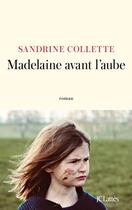-
Date de parution : 01/10/2020
-
Editeur :
Peter Lang Ag
-
EAN : 9783034334501
-
Série :
(-)
-
Support :
Poche
Résumé:
From Late Antiquity to ca. 1500, the exchange of artistic expressions, literary formulas and moral ideals allowed successive bishops to generate and transform the paradigmatic buildings and devices epitomising episcopal power, both in life and posthumously by dictating the manner in which they... Voir plus
From Late Antiquity to ca. 1500, the exchange of artistic expressions, literary formulas and moral ideals allowed successive bishops to generate and transform the paradigmatic buildings and devices epitomising episcopal power, both in life and posthumously by dictating the manner in which they were to be com-memorated. Indispensable to this process of integration was the ability to absorb foreign artistic formulas, devise innovative creations and integrate them into mutated patterns that were always defined by local material and intellectual conditions and resources.This volume explores the making and metamorphosis of images and memories of European Medieval Bishops as individual personalities or institutional figures within the framework of their respective cathedrals. The studies discuss the circumstances and factors that have determined funerary configurations and ritual remembrances of bishops in cathedrals and ecclesiastical colleges in the Medieval Latin Church. The authors of this volume adopt and implement a dual and complementary methodology. First, they take into account a wide range of factors, including specific community practices, liturgical ceremonies, church furnishings, and artistic equipment. Second, they explore to which the morphology of individual tombs can be ascribed to the preferences of patrons who, hypothetically, would also have imposed a religious protocol as the patrons of the future commemoration of their personalities. In these novel studies, special attention is paid to the symbiosis of pictorial narratives, liturgical performativity, and spatial arrangement, which made up and propitiated a large part of the visual experience of episcopal memorials. The volume focuses on the use of the memorial devices of important bishops as a privileged lens to analyse the complexity and dynamics of the artistic landscape in western Europe during the Middle Ages.
Donner votre avis















